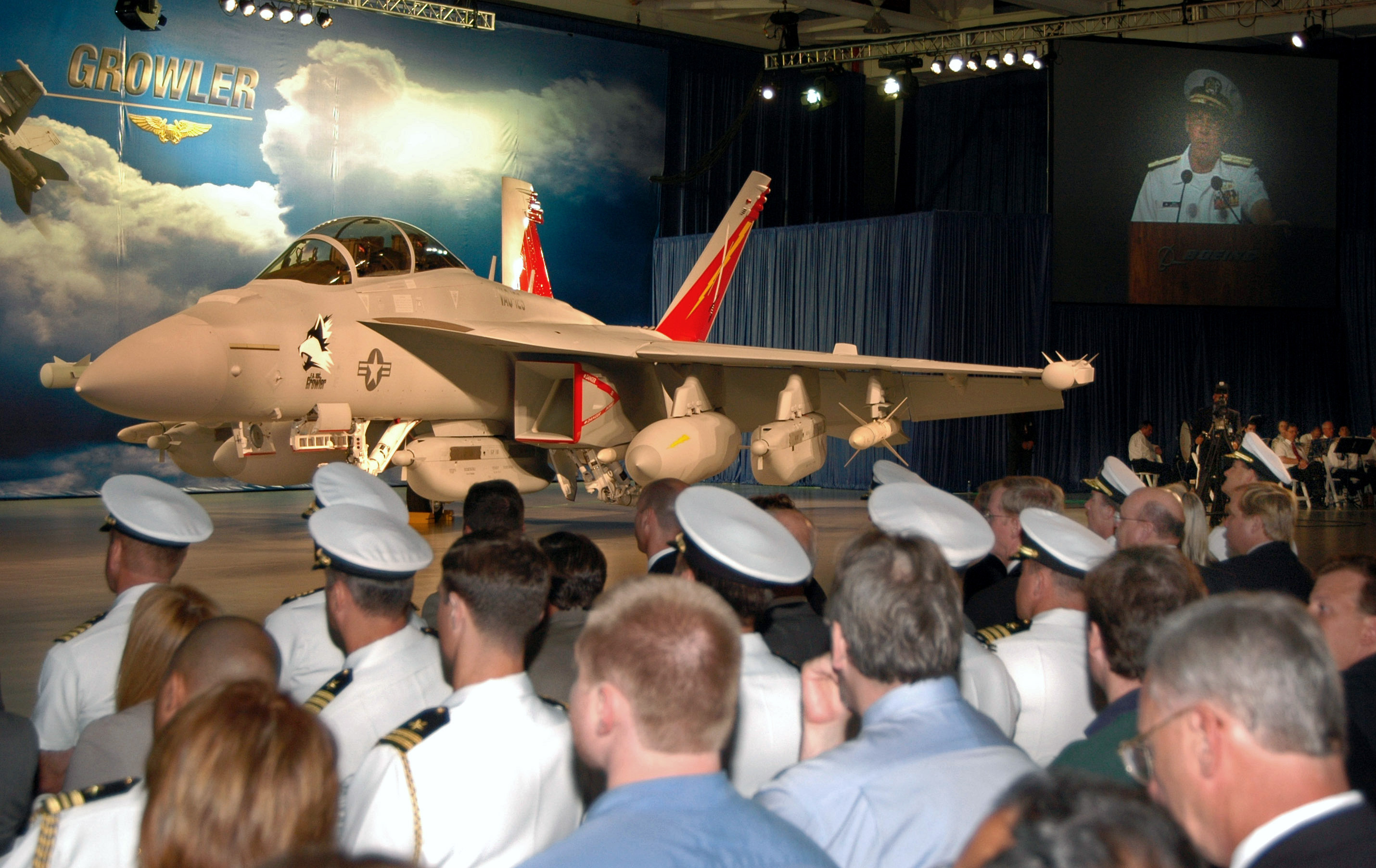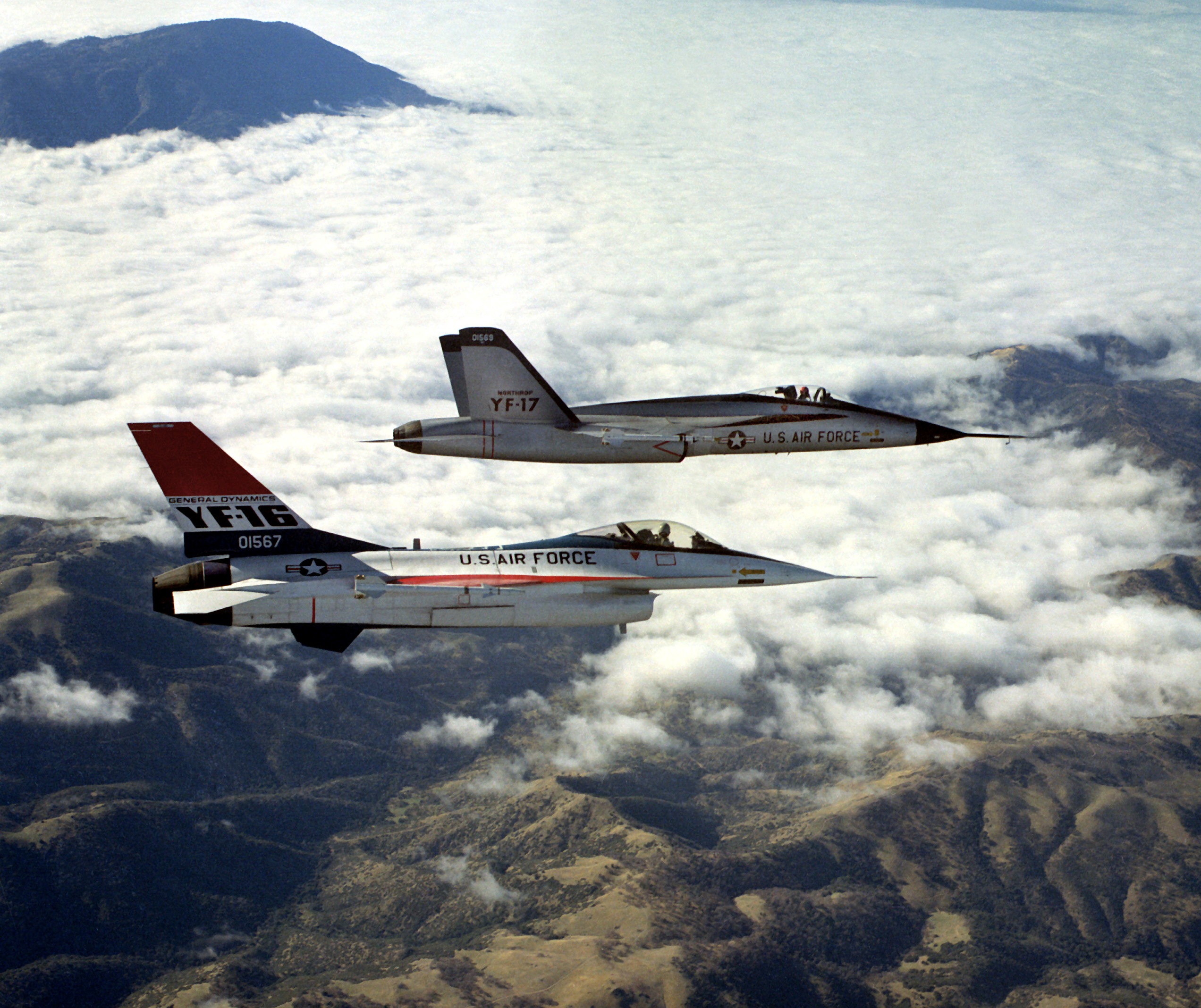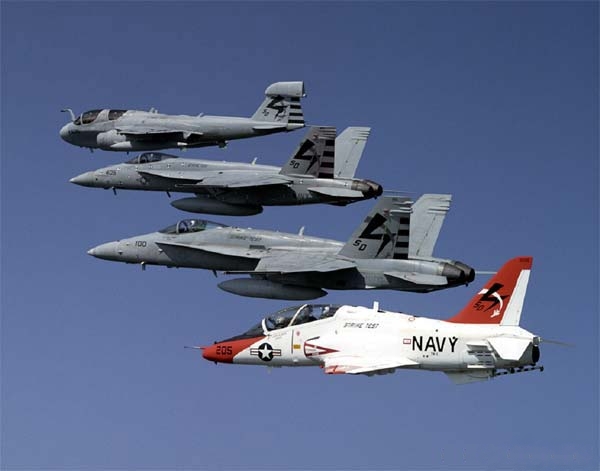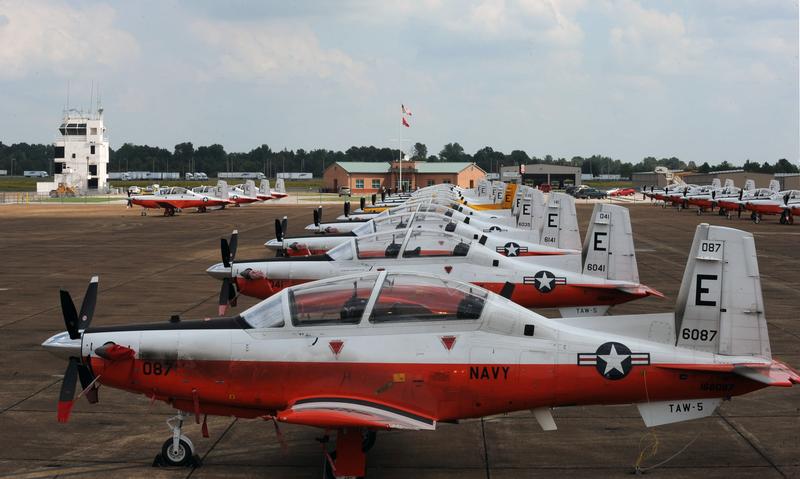|
Naval Air Warfare Center
Naval Air Warfare Center is a research organization within Naval Air Systems Command to test and evaluate air warfare for the United States Navy. The center combines the following divisions: Aircraft division The Naval Air Warfare Center Aircraft Division (NAWCAD) conducts research, development, test, evaluation and sustainment for all United States Navy and United States Marine Corps aircraft and aircraft systems. It operates a test wing and ranges, facilities, laboratories and aircraft in support of military operations worldwide. NAWCAD employs military and civilian engineers, testers, scientists, and other professionals across four locations: Orlando, Florida; Lakehurst, New Jersey, St. Inigoes, Maryland and at its headquarters in Patuxent River, Maryland. It is one of two naval air warfare centers, along with Naval Air Warfare Center Weapons Division, that provides scientific and technical support to Naval Air Systems Command (NAVAIR). Naval Test Wing Atlantic Naval Test Wi ... [...More Info...] [...Related Items...] OR: [Wikipedia] [Google] [Baidu] |
Naval Air Systems Command
The Naval Air Systems Command (NAVAIR) provides materiel support for aeronaval aircraft and airborne weapon systems for the United States Navy. It is one of the Echelon II Navy systems commands (SYSCOM), and was established in 1966 as the successor to the Navy's Bureau of Naval Weapons. NAVAIR is headquartered in Naval Air Station Patuxent River in St. Mary's County, Maryland, with military and civilian personnel stationed at eight locations across the continental United States and one site overseas. The current commander as of September 2021 is Vice Admiral Carl P. Chebi, USN. The vice commander is Captain Todd M. Evans, USN. The deputy commander is Mr. Theodore J. Short Jr., SES. The Command Master Chief is CMDCM Todd A. Anselm, USN. NAVAIR's mission is to provide full life-cycle support of naval aviation aircraft, weapons and systems operated by Sailors and Marines. This support includes research, design, development and systems engineering, acquisition, test and evaluat ... [...More Info...] [...Related Items...] OR: [Wikipedia] [Google] [Baidu] |
Boeing E-6 Mercury
The Boeing E-6 Mercury (formerly E-6 Hermes) is an airborne command post and communications relay based on the Boeing 707-300. The original E-6A manufactured by Boeing's defense division entered service with the United States Navy in July 1989, replacing the EC-130Q. This platform, now modified to the E-6B standard, conveys instructions from the National Command Authority to fleet ballistic missile submarines (see communication with submarines), a mission known as TACAMO ("Take Charge And Move Out"). The E-6B model deployed in October 1998 has the ability to remotely control Minuteman ICBMs using the Airborne Launch Control System. The E-6B replaced Air Force EC-135Cs in the '' Looking Glass'' role, providing command and control of U.S. nuclear forces should ground-based control become inoperable. With production lasting until 1991, the E-6 was the final new derivative of the Boeing 707 to be built. Design and development Like the E-3 Sentry Airborne Warning and C ... [...More Info...] [...Related Items...] OR: [Wikipedia] [Google] [Baidu] |
Boeing Insitu RQ-21 Blackjack
The Boeing Insitu RQ-21 Blackjack, company name Integrator, is an American unmanned air vehicle designed and built by Boeing Insitu to meet a United States Navy requirement for a small tactical unmanned air system (STUAS). It is a twin-boom, single-engine monoplane, designed as a supplement to the Boeing Scan Eagle. The Integrator weighs and uses the same launcher and recovery system as the Scan Eagle. Development The RQ-21 was selected in June 2010 over the Raytheon Killer Bee, AAI Aerosonde, and General Dynamics/Elbit Systems Storm. The RQ-21A Integrator first flew on 28 July 2012. On 10 September 2012, the Integrator entered developmental testing with a 66-minute flight. The Navy launched one using a pneumatic launcher and a recovery system known as Skyhook. This eliminates the need for runways and enables a safe recovery and expeditionary capability for tactical missions on land or sea. At the current testing rate, Initial Operational Capability (IOC) was expected in ... [...More Info...] [...Related Items...] OR: [Wikipedia] [Google] [Baidu] |
AeroVironment RQ-20 Puma
The AeroVironment RQ-20 Puma is an American unmanned aircraft system which is small, battery powered, and hand-launched. Its primary mission is surveillance and intelligence gathering using an electro-optical sensor, electro-optical and infrared camera. It is produced by AeroVironment. Configuration Each military RQ-20A system has three air vehicles and two ground stations. The Puma AE can operate at temperatures ranging from , wind speeds up to , and an inch of rain per hour (25.4mm/h). It had a reported top speed of 45 miles per hour, a range of 10+ miles and an endurance time of more than 2 hours. The drone carries an array of sensors, including a times-fifty optical zoom, to live-stream video back to its ground station. History In 2008 it was selected for the United States Special Operations Command. In March 2012 the United States Army ordered the Puma All Environment (AE) and designated it the RQ-20A. In April, the United States Marine Corps and United States Air For ... [...More Info...] [...Related Items...] OR: [Wikipedia] [Google] [Baidu] |
AeroVironment RQ-11 Raven
The AeroVironment RQ-11 Raven is a small hand-launched remote-controlled unmanned aerial vehicle (or SUAV) developed for the United States military, but now adopted by the military forces of many other countries. The RQ-11 Raven was originally introduced as the FQM-151 in 1999, but in 2002 developed into its current form, resembling an enlarged FAI class F1C free flight model aircraft in general appearance. The craft is launched by hand and powered by a pusher configuration electric motor. The plane can fly up to 10 km at altitudes of approximately 150 m above ground level, and over 4,500 m above mean sea level, at flying speeds of 45–100 km/h. The U.S. Army deploys the Raven at company-level. Design and development The Raven RQ-11B UAS is manufactured by AeroVironment. It was the winner of the US Army's SUAV program in 2005, and went into Full-Rate Production (FRP) in 2006. Shortly afterwards, it was also adopted by the US Marines, and the US Air Force for thei ... [...More Info...] [...Related Items...] OR: [Wikipedia] [Google] [Baidu] |
Lockheed Martin F-35 Lightning II
The Lockheed Martin F-35 Lightning II is an American family of single-seat, single-engine, supersonic Stealth aircraft, stealth strike fighters. A multirole combat aircraft designed for both Air superiority fighter, air superiority and attack aircraft, strike missions, it also has electronic warfare and intelligence, surveillance, and reconnaissance capabilities. Lockheed Martin is the prime F-35 contractor with principal partners Northrop Grumman and BAE Systems. The aircraft has three main variants: the CTOL, conventional takeoff and landing (CTOL) F-35A, the STOVL, short take-off and vertical-landing (STOVL) F-35B, and the carrier-based, carrier variant (CV) Catapult Assisted Take-Off But Arrested Recovery, catapult-assisted take-off but arrested recovery (CATOBAR) F-35C. The aircraft descends from the Lockheed Martin X-35, which in 2001 beat the Boeing X-32 to win the Joint Strike Fighter program, Joint Strike Fighter (JSF) program intended to replace the General Dynami ... [...More Info...] [...Related Items...] OR: [Wikipedia] [Google] [Baidu] |
McDonnell Douglas T-45 Goshawk
The McDonnell Douglas (now Boeing) T-45 Goshawk is a highly modified version of the British BAE Systems Hawk land-based training jet aircraft. Manufactured by McDonnell Douglas (now Boeing) and British Aerospace (now BAE Systems), the T-45 is used by the United States Navy as an aircraft carrier-capable trainer. Development Background The T-45 Goshawk has its origins in the mid-1970s, during which time the U.S. Navy formally commenced its search for a new jet trainer aircraft to serve as a single replacement for both its T-2 Buckeye and TA-4 Skyhawk trainers. During 1978, the VTXTS advanced trainer program to meet this need was formally launched by the U.S. Navy. An Anglo- American team, comprising British aviation manufacturer British Aerospace (BAe) and American aircraft company McDonnell Douglas (MDC), decided to submit their proposal for a navalised version of BAe's land-based Hawk trainer. Other manufacturers also submitted bids, such as a rival team of French aircraft c ... [...More Info...] [...Related Items...] OR: [Wikipedia] [Google] [Baidu] |
Boeing EA-18G Growler
The Boeing EA-18G Growler is an American carrier-based electronic warfare aircraft, a specialized version of the two-seat Boeing F/A-18F Super Hornet. The EA-18G replaced the Northrop Grumman EA-6B Prowlers in service with the United States Navy. The Growler's electronic warfare capability is primarily provided by Northrop Grumman. The EA-18G began production in 2007 and entered operational service with the US Navy in late 2009. Australia has also purchased thirteen EA-18Gs, which entered service with the Royal Australian Air Force in 2017. Development Requirement and testing On 15 November 2001, Boeing successfully completed an initial flight demonstration of F/A-18F "F-1" fitted with the ALQ-99 electronic warfare system to serve as the EA-18 Airborne Electronic Attack (AEA) concept aircraft. In December 2003, the US Navy awarded a development contract for the EA-18G to Boeing. As primary contractor, Boeing was to construct the forward fuselage and wings, and perform the ... [...More Info...] [...Related Items...] OR: [Wikipedia] [Google] [Baidu] |
Boeing F/A-18E/F Super Hornet
The Boeing F/A-18E and F/A-18F Super Hornet are a series of American supersonic twinjet, twin-engine, Carrier-based aircraft, carrier-capable, Multirole combat aircraft, multirole fighter aircraft derived from the McDonnell Douglas F/A-18 Hornet. The Super Hornet is in service with the armed forces of the United States, Australia, and Kuwait. The F/A-18E single-seat and F tandem-seat variants are larger and more advanced versions of the F/A-18C and D Hornet, respectively. A strike fighter capable of air-to-air and air-to-ground/surface missions, the Super Hornet has an internal 20mm M61 Vulcan, M61A2 rotary cannon and can carry air-to-air missiles, air-to-surface missiles, and a variety of other weapons. Additional fuel can be carried in up to five external fuel tanks and the aircraft can be configured as an airborne tanker by adding an external Aerial refueling, air-to-air refueling system. Designed and initially produced by McDonnell Douglas, the Super Hornet first flew in ... [...More Info...] [...Related Items...] OR: [Wikipedia] [Google] [Baidu] |
McDonnell Douglas F/A-18 Hornet
The McDonnell Douglas F/A-18 Hornet is an all-weather supersonic, twinjet, twin-engine, carrier-based aircraft, carrier-capable, Multirole combat aircraft, multirole combat aircraft, designed as both a Fighter aircraft, fighter and attack aircraft (hence the F/A 1962 United States Tri-Service aircraft designation system, designation). Designed by McDonnell Douglas and Northrop Corporation, Northrop, the F/A-18 was derived from the latter's YF-17 in the 1970s for use by the United States Navy and United States Marine Corps, Marine Corps. The Hornet is also used by the air forces of several other nations, and formerly by the U.S. Navy's Flight Demonstration Squadron, the Blue Angels. The F/A-18 was designed to be a highly versatile aircraft due to its avionics, glass cockpit, cockpit displays, and excellent aerodynamic characteristics, with the ability to carry a wide variety of weapons. The aircraft can perform escort fighter, fighter escort, fleet air defense, suppression of en ... [...More Info...] [...Related Items...] OR: [Wikipedia] [Google] [Baidu] |
VX-23
Air Test and Evaluation Squadron 23 (VX-23) is an aviation unit of the United States Navy based at Naval Air Station Patuxent River, Maryland, United States. The squadron was established on 22 July 1995. Using the tail code ''SD'', the squadron operates multiple aircraft types of the United States Navy for test and evaluation purposes. The aircraft fly with the radio callsign ''Salty Dog''. Overview VX-23 is an aircraft test squadron that conducts research, testing and evaluation of fixed wing tactical aircraft and UAV's. VX-23 provides aircraft, pilots, maintenance services, safety oversights and facility support for these operations. Their main mission is flying qualities and performance evaluations, shipboard suitability, propulsion system testing, tactical aircraft mission systems testing, ordnance compatibility and ballistics efforts, reliability and maintainability assessments, flight fidelity simulation and flight control software development. The squadron also provides ... [...More Info...] [...Related Items...] OR: [Wikipedia] [Google] [Baidu] |
Beechcraft T-6 Texan II
The Beechcraft T-6 Texan II is a single-engine turboprop aircraft built by Textron Aviation. It is a license-built Pilatus PC-9, a trainer aircraft. The T-6 replaced the United States Air Force's Cessna T-37B Tweet and the United States Navy's T-34C Turbo Mentor during the 2010s. The T-6A is used by the United States Air Force for basic pilot training and Combat Systems Officer (CSO) training, the United States Navy for primary and intermediate Naval Flight Officer (NFO) training for the United States Navy and United States Marine Corps and by the Royal Canadian Air Force (CT-156 Harvard II designation), Greek Air Force, Israeli Air Force (with the "Efroni" nickname), and Iraqi Air Force for basic flight training. The T-6B is used by the United States Navy for primary Naval Aviator training for the United States Navy, United States Marine Corps and United States Coast Guard. The T-6C is used for training by the Mexican Air Force, Royal Air Force, Royal Moroccan Air For ... [...More Info...] [...Related Items...] OR: [Wikipedia] [Google] [Baidu] |










